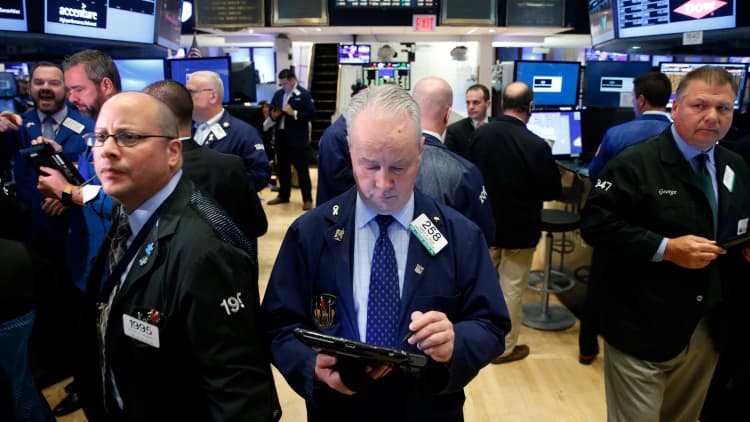
Maybe 2017 finally will bring an end to all that talk about a "Great Rotation" of investor cash from bonds to stocks.
In a broad sense, market watchers have been looking for the bond market to collapse for decades. But in practice, it hasn't happened. Investors keep shoveling cash into fixed income and pulling it out of stocks, despite an environment that would seem to suggest difficult times for bonds.
Still, predictions of a fundamental shift in behavior have persisted. But investors would be wise to tread cautiously when hearing calls that this finally will be the year when the Great Rotation happens.
"In the realm of investing, an example of 'fake news' is the claim by some market participants that a 'great rotation' will take place from bonds to stocks," David Kostin, chief U.S. equity strategist at Goldman Sachs, said in a report for clients. "Despite a sharp rise in interest rates during the past six months and a drop in the market value of debt holdings, we expect minimal asset rotation away from debt and into equities during 2017."
Over the past year or so, in fact, quite the opposite has happened. Even as bond yields have surged, which pushes price levels down, investors have bought bonds.
Fixed income funds saw $203.7 billion worth of inflows for the first 11 months of 2016, while U.S. equity funds surrendered $41.8 billion in outflows, according to the latest Morningstar data. The story was the same in 2015, when taxable and municipal bond funds brought in $46.1 billion and U.S. equities saw $66.5 in redemptions.
One of the main reasons money keeps coming into bonds is simply logistical: Some investors, particularly on the institutional side, are required to balance their risk. For that reason as much as any, a wholesale exodus from fixed income is unlikely anytime soon.
Indeed, the most popular exchange-traded fixed income fund is the . It has seen nearly $11.5 billion in new investor cash come in over the past 12 months, a period during which its price actually has been flat.
"Several investor categories have debt allocations that are currently at the lowest level in 30 years," Kostin said. "Debt holdings of these investors may decline further, but a more likely outcome is that bond holdings and allocations remain unchanged and debt as a share of the portfolio falls only to the extent equities appreciate."
Insurance companies, for instance, hold $3.2 trillion of the $8.5 trillion corporate debt market, according to figures from Goldman and the Securities Industry and Financial Markets Association. However, the industry faces restrictions on the amount of equities it can hold and is thus unlikely to shed a significant level of bonds.
More probably, the most money movement will happen between sectors both in the stock and bond markets.
A rotation, but not really 'great'
Investors worried about growth heating up have been scooping up Treasury Inflation-Protected Securities — the iShares TIPS ETF has seen $6.8 billion in flows the past 12 months, the second most of any fund — and shortening duration. On the equity side, emerging market funds have been popular, as have value-focused funds.
"We do not (and never have) subscribed to the rotation theory," Mark Schofield, managing director of global strategy at Citigroup, said in a note. "We believe that risk rotations take place within asset classes. Risk rotations within asset classes can sometimes be coincidental and negatively correlated with rotations in other asset classes but, as we have seen in the past few years, they can also be uncorrelated or even positively correlated."
While the theme goes back years, Michael Hartnett, chief investment strategist at Bank of America Merrill Lynch, coined the "Great Rotation" back around 2012. He recently said he still believes a rotation is in the air, though it's more nuanced than a simple move from bonds to stocks.
He forecasts 2017 to see a shift from deflation to inflation trades. As part of that, he expects money to flow from bonds to commodities. For stocks, he sees a shift from growth to value and large cap to small cap.
"In 2017 investors likely will experience a backdrop where inflation surprises to the upside, leading to further rotation from entrenched long positions in 'deflation assets' to assets that benefit from higher rates and inflation. Real assets should outperform financial assets," Hartnett said in his 2017 outlook.


